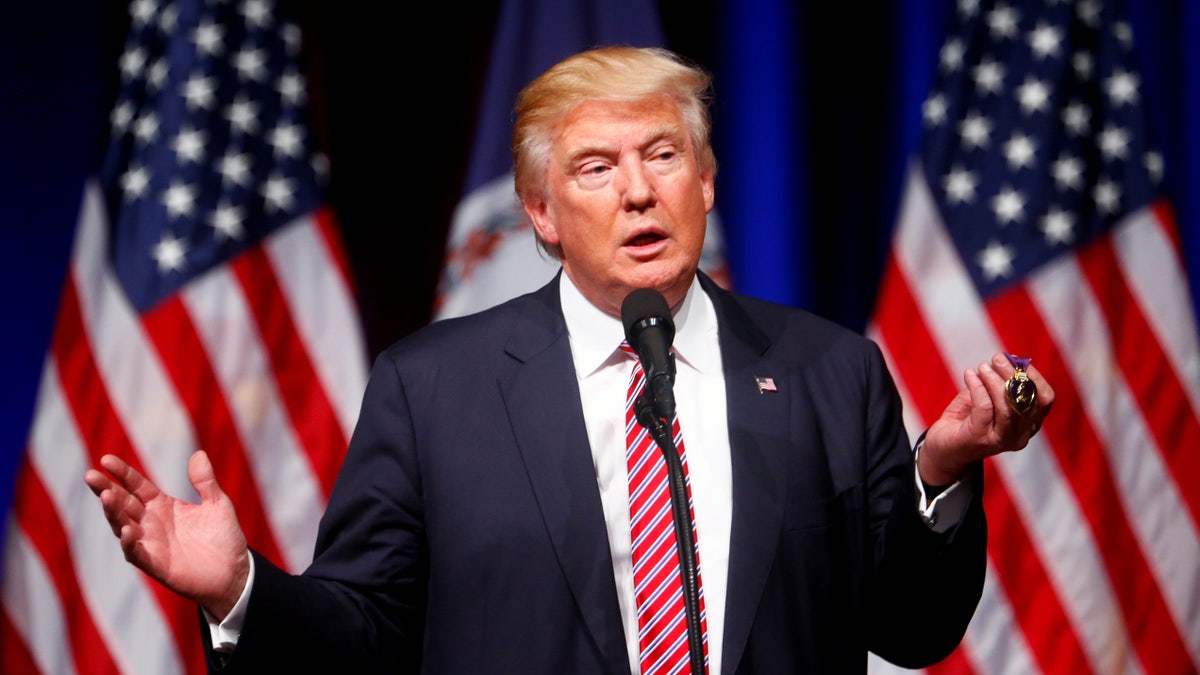
Republican U.S. Presidential nominee Donald Trump holds up a Purple Heart during a campaign event at Briar Woods High School in Ashburn, Virginia, U.S. August 2, 2016. REUTERS/Eric Thayer - RTSKQZF
Last month’s Republican and Democratic national conventions showed that both parties are deeply split internally over ideology and personalities. Not only that, but their presidential nominees remain highly unpopular.
The GOP gathering in Cleveland was poorly produced and featured the presidential primary’s runner-up, Texas Sen. Ted Cruz, in a prime-time appearance pointedly refusing to endorse Donald Trump.
The Democratic convention in Philadelphia was marred by supporters of Sen. Bernie Sanders, enraged by hacked emails from the Democratic National Committee showing that the party establishment favored Hillary Clinton. They booed the party’s chairwoman out of office and chanted “no more war” when Democratic leaders spoke of fighting Islamic State and al Qaeda.
Donald Trump and Hillary Clinton polished their flawed images, but the Democrat did a better job. Between July 17 and this Wednesday, Mrs. Clinton’s favorable rating rose to 40.6% from 38.4% in the Real Clear Politics average. Her unfavorable rating dropped to 53.9% from 56.2%. That’s a total swing of four and a half points.
No one on Team Trump—especially not the principal—appears to have a plan for what messages to emphasize and when. No one seems charged with watching what Mrs. Clinton says so the candidate can quickly volley back. No one restrains Mr. Trump before he activates his Twitter account. Ad hoc may be freewheeling and fun, but it often leads to defeat.
During the same period Mr. Trump’s favorable rating moved to 35.3% from 33.6% and his unfavorable rating to 57.9% from 60.1%, a total swing of 3.9 points.
The general-election campaign has hardly begun, and data from Gallup shows that both candidates are more widely disliked than any presidential hopeful since at least the 1960s.
To continue reading Karl Rove's column in the Wall Street Journal, click here.
